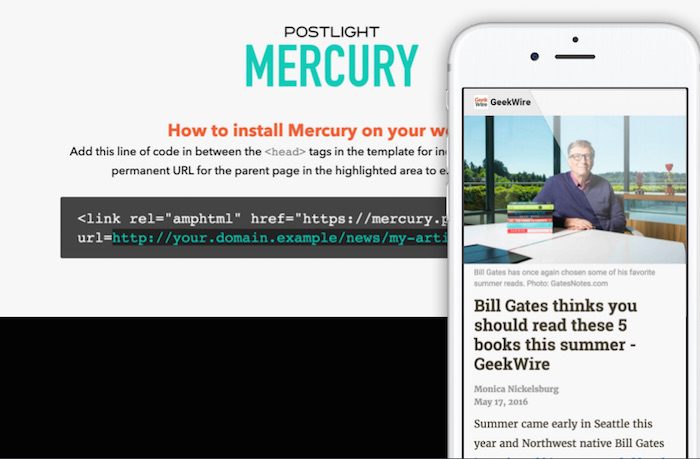
Still, the process of getting set up on AMP is fairly involved and time-consuming. But on Wednesday, the New York–based digital agency Postlight released a free tool, Mercury, that promises “instant AMP results with zero development.”
“It takes real energy, time, and money to get on AMP,” said Rich Ziade, cofounder (along with Paul Ford) of Postlight, which counts publishers like Time Inc. and Vice among its clients. “The bigger publishers are starting to earmark resources and putting them in motion, but smaller publishers, or publishers that don’t have the resources, are kind of hesitant, or taking a wait-and-see attitude.” It had been taking some of Postlight’s publisher clients two to four months to rewire their content systems to support AMP. (Richard Gingras, Google’s head of news, says small teams with homegrown CMSes can implement AMP “within a few days.”)To install Mercury, all you have to do is fill out a form on Postlight’s site, get a line of code, and drop it into your template page. The tool works with any CMS, including WordPress (which already has an AMP plugin that “spits out a generic look and feel,” Ziade said; he encouraged publishers to test both).
Postlight considered releasing a free tool for Facebook Instant Articles simultaneously with the AMP tool, but “it would have taken us about twice as long to implement,” Ziade said. (Working with the open-source AMP was easier.) Instant Articles support could be included in a future version of Mercury, though.
“One of the goals of this kind of tool was to empower publishers a bit when the game’s changed on them yet again,” Ziade said. “We were seeing people freak out, and we were just like, why don’t we give them a tool that makes it easier for them to react to what’s happening out there.”